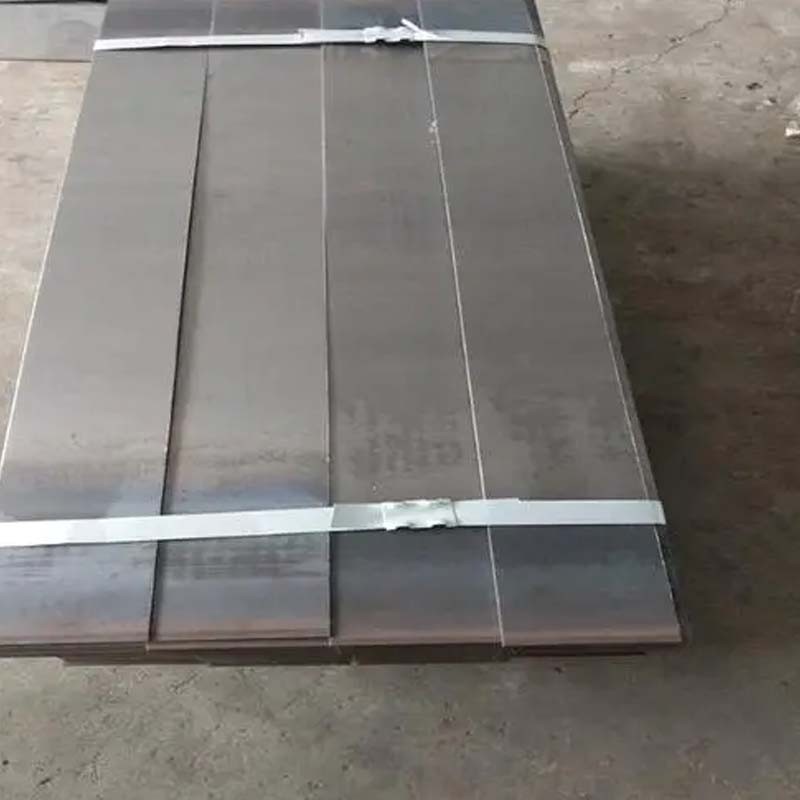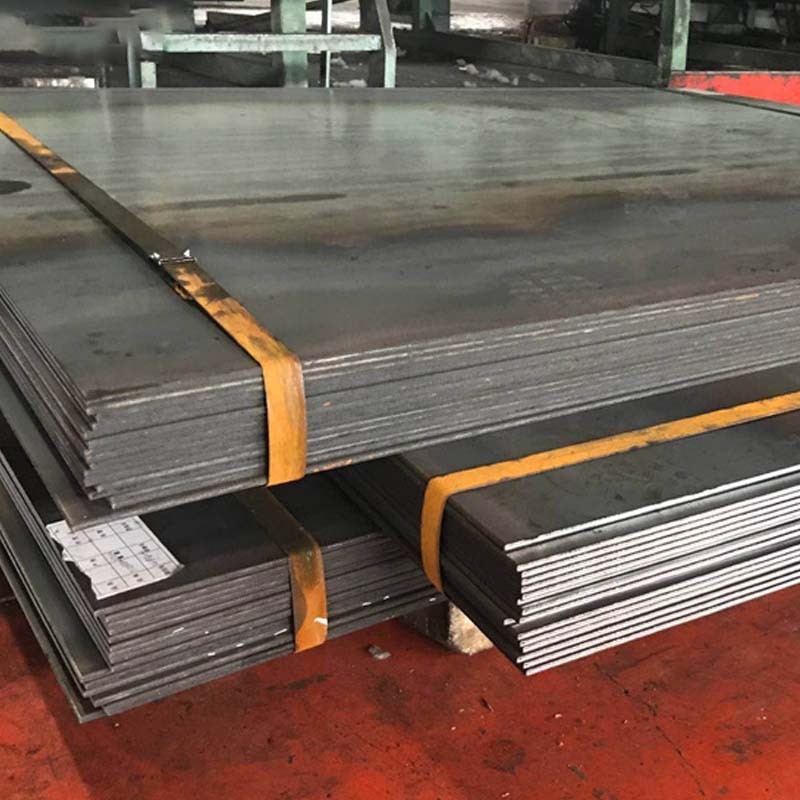
Carbon Structural Steel Plate is a common type of structural steel, which can be divided into two categories: ordinary carbon structural steel and high-quality carbon structural steel. The former contains more impurities, is inexpensive and is used in places where the performance requirements are not high, and most of its carbon content is below 0.30% and manganese content is not more than 0.80%, with lower strength but good plasticity, toughness and cold deformation properties. Except for a few cases, it is generally not heat-treated and used directly. It is mostly made into bar steel, special-shaped steel, steel plate, etc. Uses a lot, with a large amount, mainly used for railroads, bridges, various types of construction projects, the manufacture of all kinds of metal components to withstand static loads and does not require heat treatment is not important mechanical parts and general weldments. High-quality carbon structural steel steel is pure, few impurities, good mechanical properties, can be used after heat treatment. According to the manganese content is divided into ordinary manganese content (less than 0.80%) and higher manganese content (0.80% ~ 1.20%) two groups. Carbon content of 0.25% or less, more direct use without heat treatment, or by carburizing, carbonitriding and other treatments, the manufacture of small and medium-sized gears, shafts, piston pins, etc.; Carbon content of 0.25% to 0.60%, the typical steel 40, 45, 40Mn, 45Mn, etc., and more by the quenching process, the manufacture of a variety of mechanical parts and fasteners, etc.; Carbon content of more than 0.60%, such as 65, 70, 85, 65Mn, 70Mn, etc., more as the use of spring steel. Its main components are carbon and iron, usually contains a small amount of other alloying elements. Carbon structural steel is one of the simplest types of steel with good weldability, workability and relatively low cost.
The characteristics of carbon structural steel plates are as follows:
1. Carbon structural steel has low carbon content and high manganese content, which is beneficial to improve the welding performance of steel;
2. Carbon structural steel has strict control over impurities such as sulfur and phosphorus, and the higher the level, the less impurities;
3. The impact toughness of carbon structural steel is higher, which can better meet the needs of professional steel;
4. The performance indicators of carbon structural steel are graded according to the thickness of the steel, which is conducive to expanding the scope of use of steel;
5. The output and consumption of carbon structural steel are large, and it is often used in the manufacture of welded structures and engineering structures.
Carbon structural steel is normally used directly in the state of supply without heat treatment. The properties and applications of commonly used carbon structural steels are mainly:
Q195 Q215
Main characteristics: high plasticity, toughness and weldability, good pressure machinability, but low strength.
Applications: Used in the manufacture of ground bolts, plowshares, smoke pipes, roofing panels, rivets, mild steel wire, thin plate, tie rods, and welded architectures.
Q235(A3)
Main characteristics: good plasticity, toughness, and weldability, cold stamping properties, as well as a certain strength and good elongation, good cold bending properties.
Applications: Widely used for general requirements of parts and welded structures, belonging to the low carbon steel,usually hot rolled into steel plate , steel profiles, steel strength. Usually used in the manufacture of structural building parts, vehicles, unimportant shafts, screws, nuts, stampings, forgings, weldments.
Q255
Main characteristics: good strength, plasticity, toughness, good weldability and cold and hot pressure processing performance.
Application: Used in the manufacture of parts requiring low strength, bolts, keys, shafts, and various profiles for steel structures, steel plates.
Q275
Main characteristics: high strength, good plasticity and cutting performance, certain welding performance. Small parts can be quenched and strengthened.
Application: Used in the manufacture of parts requiring not too high strength, such as gears, shafts, sprockets, keys, bolts, nuts, steel sections for agricultural machinery, conveyor chains and links.
Where Q235 is what we usually call A3, in the equipment generally with sheet metal parts.







|

|

|

|

|
| Timely Info | Independent | Platform | Multiple guarantees | Self-operated storage |
| About us | Channel | Useful tools |
|---|---|---|
| About China Steel Market | Prices | Steel Weight Calculation |
| Contact Us | Answers | Why Choose Us |
| Terms & Conditions | Inventory | |
| Privacy Policy | Help |
Hot search words: